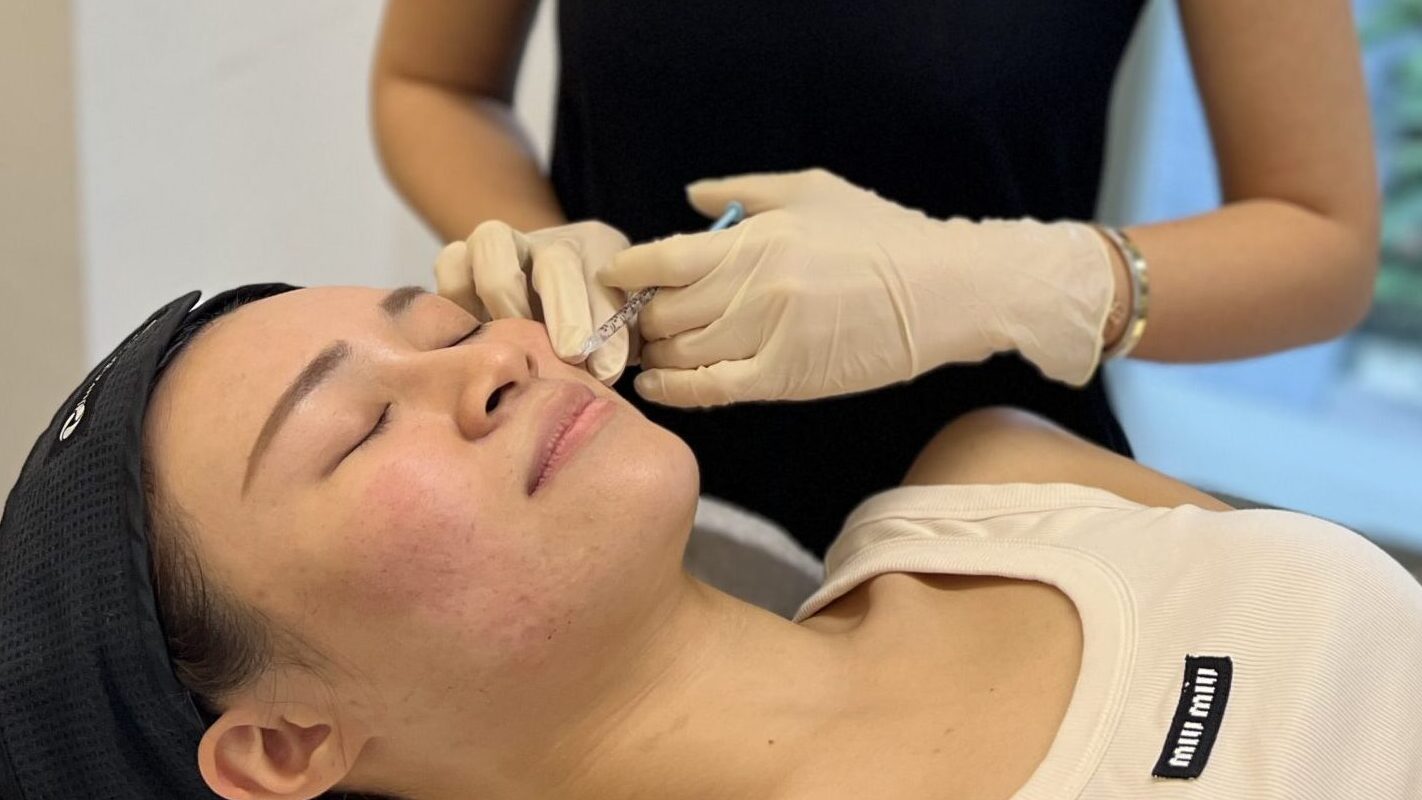If you are struggling with acne scars in Singapore, several treatment options may help reduce acne scarring. These include Fractional CO2 Laser, Chemical Peels, Intracel (microneedling with radiofrequency), Rejuran S, Steroid Injections, Subcision, and Acne Scar Fillers.

Most patients have a combination of different types of acne, and various acne scar treatments are more effective for specific types of scars. Recognising these differences, we offer a combination of treatments tailored to address the various types of acne scars and improve your skin’s appearance.
Our acne scar program uses a credit system that allows for various treatments based on individual needs. Our doctor will discuss the sessions and types of treatments during your consultation.
How long does acne scar treatment typically take? The duration of acne scar treatments varies based on the treatment and the severity of the acne scarring. Fractional CO2 Laser takes 10 to 15 minutes, Intracel takes 15 to 20 minutes, Chemical Peels take 10 minutes, Injections take 15 to 20 minutes, and subcision can take anywhere from 15 minutes to half an hour.
How many sessions does the treatment require? Fractional CO2 Laser requires 5 to 10 sessions, injections require up to 4 sessions every 3 to 4 weeks, while most other treatments require 3 to 6 sessions for optimal results. The number of sessions may vary depending on the individual’s skin and acne scarring.
Treating acne scars can provide a host of benefits, both physical and emotional.
One of the most significant benefits of treating acne scars is the boost in self-confidence. When individuals see a reduction in the visibility of their scars, they often feel more comfortable in their skin. This newfound confidence can inspire them to engage more in social activities and take on new challenges without the distress of worrying about their appearance.
Aside from enhancing confidence, successful acne scar treatment also contributes to a better self-image. Clearer skin can make individuals feel more attractive and satisfied with their appearance, which can reduce feelings of self-consciousness and promote overall well-being. When people feel good about their looks, it reflects positively on their mental and emotional health.
The benefits extend beyond just the emotional realm. With improved skin clarity, many individuals report feeling less anxious and depressed, leading to a better quality of life. They may find themselves more eager to participate in activities that they previously avoided due to shame or embarrassment over their skin condition.
Clearer skin can also open doors professionally. People who feel confident about their appearance are more likely to ace job interviews, perform better in their roles, and seek advancements in their careers. Thus, treating acne scars can indirectly contribute to career growth and professional development.

Can acne scars be prevented? There is no guaranteed way to prevent acne scars. However, you can take steps to minimise their formation by treating them promptly, avoiding picking or squeezing pimples, following a skincare routine and avoiding harsh products that can irritate the skin.
Acne scar treatment at Lux Medical Aesthetic Clinic involves consultation, procedure and aftercare.

The journey to clearer skin begins with an initial consultation at Lux Medical Aesthetic Clinic. This step allows us to thoroughly understand your skin type, the types of scars you have, and your expected outcomes.
During the consultation, a personalised treatment plan is crafted to address your unique concerns. You will have the opportunity to discuss your medical history, any previous treatments, and any specific goals you wish to achieve.
Acne scar treatment procedures at Lux vary depending on the selected method, but we generally follow a comprehensive and patient-centric approach.
Common procedural steps include skin preparation, where your skin is cleansed to remove any impurities. Depending on your tailored plan, treatments might include microneedling, laser therapy, chemical peels, or dermal fillers. Each of these methods targets different aspects of scar repair, from stimulating collagen production to resurfacing the skin.
Aftercare is a pivotal aspect of the treatment process, ensuring optimal results and promoting the healing of your skin.
General aftercare tips include:
Most importantly, maintain regular follow-up appointments to monitor your progress and make any necessary adjustments to your aftercare regimen, ensuring your skin heals beautifully.
Note: Due to MOH regulations, Thermage before and after photos cannot be publicly displayed. Please use WhatsApp or make an appointment with us to get more information.
When it comes to choosing among acne scar treatments, a personalised approach is essential.
Every scar is unique, varying not only in size and appearance but also in its underlying cause and skin type. Some acne scars may respond well to topical treatments like silicone gels, while others might require more intensive therapies such as laser treatment or microneedling. Additionally, the location and age of the scar can influence the suitability of different treatments.
This is why consulting a doctor is crucial; they can evaluate your skin and scar characteristics, providing you with a tailored treatment plan that offers the best chance for improvement.
Can treatment remove scars permanently? Complete acne scar removal is a challenging goal and can vary depending on factors like the type and severity of the scar, skin type, and the treatment method used. Some advanced treatments might offer dramatic improvements, making skin scars barely noticeable to the naked eye, but may not entirely erase them.
At Lux Medical Aesthetic Clinic, our doctor has dedicated years to specialising in medical aesthetics. We are committed to patient care, ensuring that the treatment plan meets the specific needs of each individual.
By choosing Lux Medical Aesthetic Clinic, you are opting for skilled professionals, modern equipment, and tailored care for acne scar treatment. We ensure that you receive thorough and considerate treatment.
The price of Acne Scar Treatment in Singapore by Lux Medical Aesthetic Clinic can include the following:
Find out more about our Acne Scar program.
5 session(s) of Fractional Co2 Laser starts at $2000*
Subcission price starts from $400*
Acne Scar filler price starts from $650*
Injection for keloid price starts from $80*
Intracel price starts from $800*
Chemical Peel price starts from $250*
Rejuran S Acne scar treatment starts from $750*
Contact us at +65 6815 9922 or Whatsapp/SMS +65 8866 9922 or email us at consult@luxaestheticclinic.com to book an appointment or to find out more!
Important Information
*prices stated are exclusive of 9% GST.
Nothing in this website constitutes or is intended to constitute medical advice and readers rely on the statements contained herein at their own risk. Treatment results, experiences and downtime (if any) may vary by individuals. Please make an appointment with our clinic for a thorough medical assessment of your condition and treatment requirements.
Dr Kellyn Shiau graduated from University with a Bachelor of Medicine and Surgery. She also holds a Graduate Diploma in Family Medicine from the National University of Singapore.
After graduation, she practiced medicine in various major restructured hospitals and also privately with a well-established medical group in Singapore. She is experienced and has trained extensively in medical aesthetics for many years.
